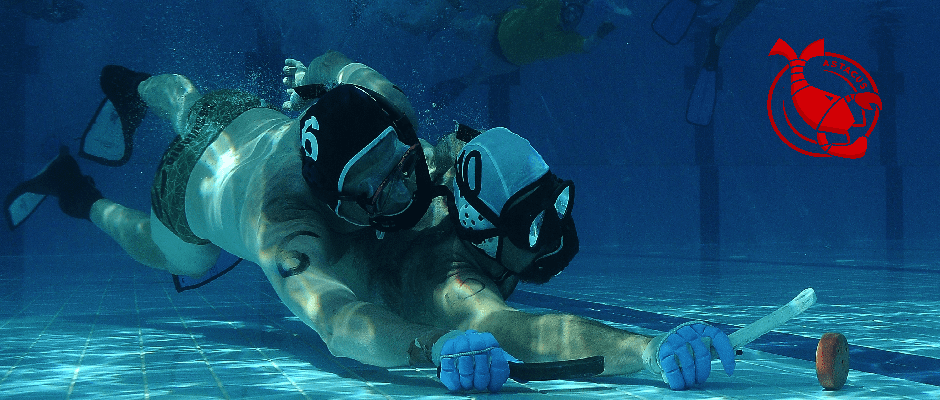COMBINE HOCKEY, FREEDIVING, AND WATER POLO AND YOU’LL HAVE AN IDEA OF WHAT UNDERWATER HOCKEY LOOKS LIKE.
There’s an underground—or rather, underwater—sport you’ve likely never heard of. Introducing underwater hockey, a stick-and-puck sport played along the bottoms of swimming pools around the world. In April, the U.S. Underwater Hockey Team will head to South Africa for the World Championships. Not ready to sign up for the elite team just yet? You might be surprised to find a rec league at your community pool. Dave Kennedy, the 35-year-old owner of an underwater hockey gear company, started playing the sport in college back in 1998, on a club team at the University of Illinois at Urbana–Champaign. He’s since competed at the World Championships four times.
1 FIND A POOL
“It’s 10 players on each team, six versus six, with four subs. We play in pools, and we’re shooting for pools that are six to nine feet deep. But honestly, we’d play in a fountain if we could. There simply aren’t that many places to play.”
2 GET EQUIPPED
“There’s no tank in underwater hockey. You have to hold your breath. It’s very limited equipment: a low-volume mask, fins, snorkel, gloves and a short stick. You take a deep breath, swim to the bottom of the pool, pass the puck to your teammate, then come back up for air.”
3 HOLD YOUR BREATH
“You’ve got to spend time working on breath holding. We’ve found that after two weeks of practice, people’s down time—the amount of time they’ll spend underwater—is usually doubled. Get comfortable using a snorkel. Try to use as much of your lungs as possible. Exhale completely before you take a new breath. People who’ve played water polo or swam competitively are usually the most comfortable from the start.”
4 LOOK AHEAD
“The masks we wear are made for freediving. You have pretty good vision but you don’t always see everything. You can feel the water moving around, you can feel where people are kicking. You find your targets and you pass. But you have to remember it’s three-dimensional—you’ll have defenders coming from above you and sometimes you get caught. That’s the biggest difference from hockey. That, and you can’t breathe.”
5 SHOOT, SCORE
“New players always say they can’t wait to shoot the puck. You load your wrist and you flick it. It’s like turning your wrist to open a doorknob. You can throw the puck up to 12 feet. On plastic pool bottoms, it glides like an air hockey puck.”
6 PLAY DEFENSE
“Goalies can’t stay down forever. So the back fielders need to take responsibility when the goalie goes up for air. Whenever someone has to breathe, the formation changes to compensate for that. Stay calm. Work on your cardio. Everything’s harder in the water.”
